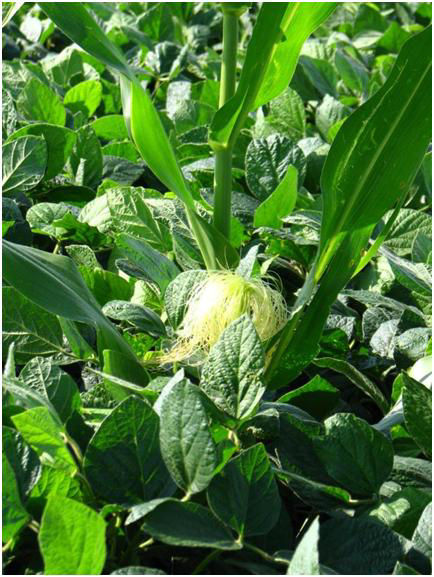3 MIN READ
Managing Volunteer Corn in Soybeans
May 31, 2023
- Volunteer corn can reduce soybean yield.
- Volunteer corn can provide a bridge for corn rootworm survival in soybean fields.
- Controlling volunteer corn early in a soybean crop is the best management practice.
Volunteer Corn Impact on Yield
Volunteer corn at a density of 5,000 plants/ac or a plant every 3.5 ft of row reduced yield about 20%.1 Clumps of volunteer corn, originating from an entire ear from the previous year plants can reduce yield even more. Two studies found that clumps consisting of 7 to 10 plants per clump reduced yield by 1% for each every 75 to 115 clumps/acre.1

Volunteer Corn and Corn Rootworm
Volunteer corn in soybeans can have implications for corn rootworm management, as well as compete with soybeans as a weed. If volunteer corn is not removed before it silks, it can attract rootworm beetles to lay eggs in the soybean field, reducing the value of rotation if the field is planted back to corn next year.
Control Volunteer Corn Early
In glyphosate tolerant soybeans, not controlling volunteer corn with the first application of glyphosate poses several risks/costs:
- While all the corn plants may die before harvest, allowing them to grow all season long will result in yield loss.
- Delaying the application of the post-emergence grass herbicide from when volunteer corn is 6-12 inch corn to 12-24 inch corn or taller, a higher rate of herbicide rates will be required, which will result in a higher cost.
- The longer the corn is allowed to grow, the more it reduces the effectiveness of rotating between corn and soybean by allowing diseases and insect pests to survive in the field.
Management Options2
Prior to planting a non-selective herbicide (for example, paraquat) can be used for corn that is tolerant to glyphosate or glufosinate. Tillage can also be used to kill germinated corn, but it may result in bring to the surface more corn seeds that will germinate later. Delaying planting may also be an option, but there may be a yield penalty for delaying seeding past the optimum time frame.
There are several grass herbicides in Group 1 (Accase inhibitors) that can be used to manage volunteer corn in soybean, Select Max® herbicide, Clethodium 2EC, Assure® II/Targa® 0.88 EC, Fusilade® DX 2EC, and Poast®. It is important to note that volunteer corn from hybrids that have the Enlist® corn trait will not be controlled by Assure II.
Sources:
1Jhala, A., Wright, B., Chahal, P. 2015. Volunteer corn in soybean: impact and management. University of Nebraska. https://cropwatch.unl.edu/volunteer-corn-soybean-impact-and-management
2 Jha, Prashant and Anderson, M. 2020. Management of Volunteer Corn in Fields Affected from Derecho. Iowa State University. https://crops.extension.iastate.edu/blog/bob-hartzler-meaghan-anderson-prashant-jha/management-volunteer-corn-fields-affected-derecho
1323_115935